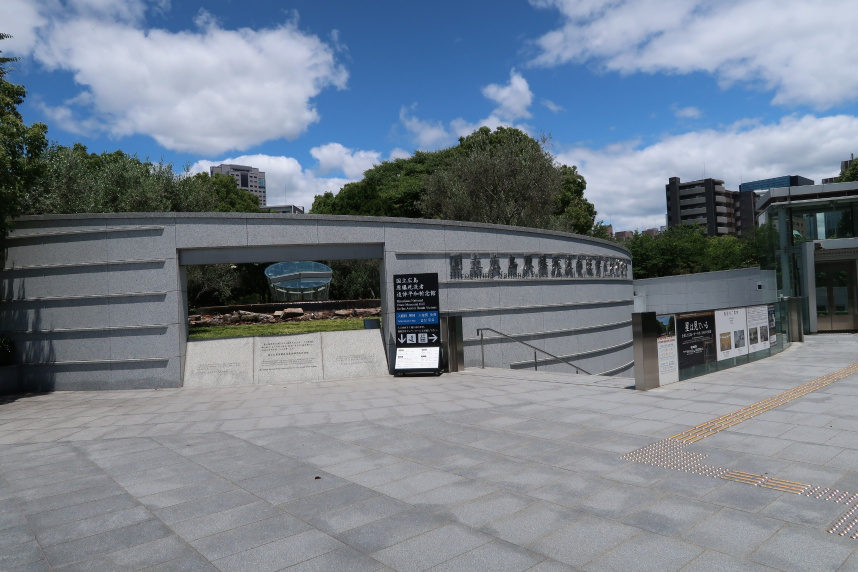 Commentary from Japan Tourism Agency
Commentary from Japan Tourism AgencyHiroshima National Peace Memorial Hall for the Atomic Bomb Victims
Table of Contents

The starkly imposing memorial hall for Hiroshima’s A-bomb victims, completed in 2002, puts human experience at the heart of its reckoning of the immense pain and loss inflicted by the attack. The memorial conveys to visitors the extent of the tragedy of the atomic bombing, while providing a space where the families of victims can reflect upon the suffering of their ancestors and loved ones.
When seen from the ground level, the building, conceived by renowned Japanese architect Tange Kenzo (1913–2005), appears to consist solely of a circular wall. The facade is broken only by a single aperture through which the upper portion of a central fountain sculpture may be viewed.
Inside the structure, the subterranean Hall of Remembrance is accessed via a slope suggestive of the reverse passage of time back to August 1945. On its walls are a 360-degree rendering of the bomb-ravaged city as it would have appeared from the hypocenter of the blast. The image is composed of 140,000 tiles: one for each of the Hiroshima A-bomb victims estimated to have died by the end of 1945. Below the panoramic image are the names of each of the 226 neighborhoods that comprised the city at the time of the bombing, positioned in accordance to their distance from ground zero.
Twelve wooden pillars support the roof, which at its center contains the glass upper section of the fountain sculpture seen through the aperture at ground level; the lower part stands directly below, in the middle of the Hall of Remembrance. Both the upper and lower sections are shaped like the face of a clock positioned at 8:15 a.m., the time the bomb was dropped. The water that flows here is an offering to the deceased souls who pleaded for water in the aftermath of the bombing, and should not be touched.
Around the perimeter of the Hall of Remembrance, spread over two floors, are the Special Exhibition Area showing video testimonies (with English subtitles) from those who experienced the bombing and/or lost loved ones in it, a library containing written accounts (in Japanese only), and the Victims’ Information Area. The latter installation, computer-enabled and consisting of 12 large video screens, displays the names and images of the bomb’s many thousands of victims, and also enables individual victims to be searched for by name.